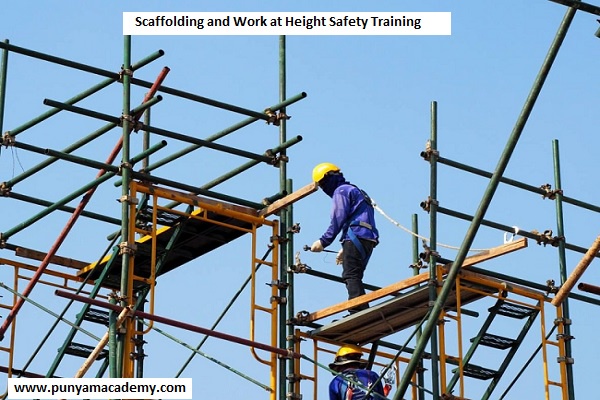To prevent mishaps involving scaffolding, a variety of safety practices and protocols are used. These mishaps can happen for a variety of causes, including falls, electrocution, being hit by falling objects, and more. Employers must give workers the necessary scaffolding safety training and orientation regarding scaffolding safety procedures if they are to prevent these incidents. Workers should also be aware of the risks involved with using scaffolds while at work and take the required procedures to avoid them. Any building site needs scaffolding to function properly. Scaffolding is utilized by two out of every three construction employees. It increases the danger of significant mishaps and catastrophic injuries while enabling workers in all industries to work at tremendous heights—especially when not used correctly.
Scaffolding and Working at Height Safety Tips
Working at height is always dangerous, especially in the construction business. To avoid potential accidents, scaffolding safety procedures must be strictly enforced. Here are ten scaffolding safety precautions to remember:
- Make Use of Proper Safety Equipment: When working on scaffolding, personal protective equipment (PPE) is essential. Gloves, hard helmets, safety glasses or goggles, and respiratory protection are also needed.
- Inspect the Scaffold Regularly: Conduct a thorough inspection of the scaffolding before each work shift using a checklist or inspection app. Check for any signs of damage, loose connections, or other potential concerns.
- Mind Load Limits: Scaffolding materials and designs are created with precise load-bearing capabilities in mind. Choosing components that are insufficient for the types of loads you intend to apply in your business poses a major risk to personnel. Platforms may crack, crumble, or completely collapse, causing serious harm to anyone working nearby.
- Recognize the Relevant Regulations and Standards: Understand industry regulations and standards for scaffolding before erecting platforms to avoid accidents and ensure compliance with established criteria. Train staff to recognize and minimize hazards related to the scaffolding used.
- Follow the Instructions Provided by the Manufacturer: Always follow the manufacturer's suggestions when installing scaffolding. This procedure should be overseen by a qualified and experienced individual.
- Examine the Scaffolding Materials: Before erecting your work platforms, you must inspect all of your materials. Check that none of the parts you use have any faults or damage that could jeopardise the structural integrity of your scaffolds. Furthermore, all parts should be obtained from the same manufacturer and designed to be used together. The mismatch parts can constitute a serious scaffolding hazard and lead to structural failure.
So, make sure to follow these guidelines and to always wear appropriate safety equipment. And, if in doubt, seek the advice of a knowledgeable specialist. Don't forget to check out the Punyam Academy’s scaffolding safety training for all of your safety needs! It's a fantastic tool for staying organized and doing inspections fast and easily. You can help keep your employees safe and avoid potential mishaps by following these scaffolding safety tips. When working at heights, keep in mind that safety is always a primary consideration.


No comments yet